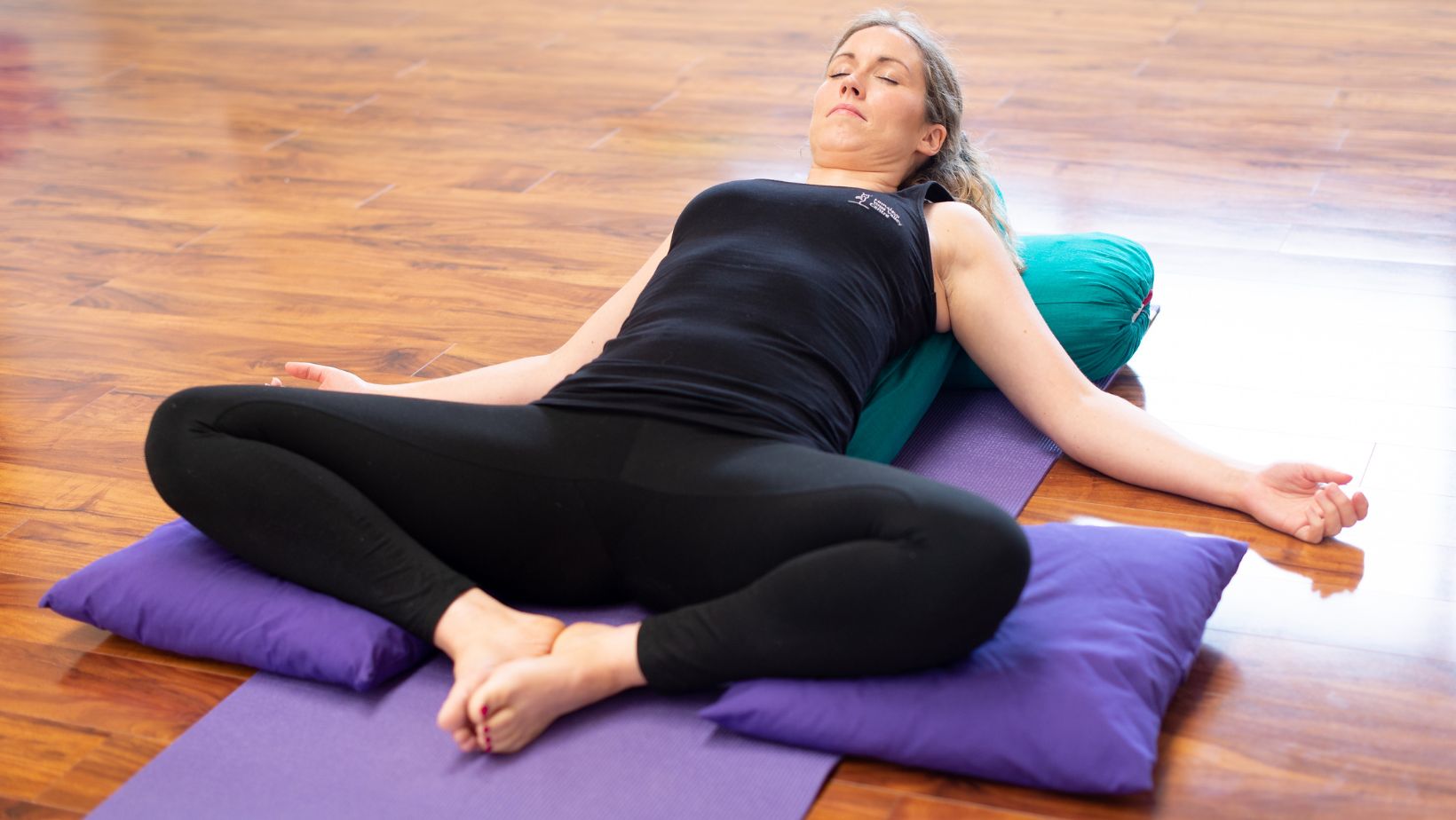Yoga Nidra for Sleep: Experience Deeper Rest

Are you struggling to get a good night’s sleep? Tossing and turning, staring at the ceiling, and counting sheep can be incredibly frustrating. If this sounds familiar, it might be time to explore a natural and deeply relaxing solution: Yoga Nidra. Often called “yogic sleep,” Yoga Nidra is a powerful meditation technique that can guide you into a state of profound relaxation, helping you to experience deeper rest and better sleep.
The Benefits of Practicing Yoga Nidra
Let’s dive into the benefits Yoga Nidra can bring:
- Improved Sleep Quality: Yoga Nidra calms your nervous system and reduces stress, making it easier to fall asleep and stay asleep.
- Reduced Stress and Anxiety: By lowering cortisol levels, Yoga Nidra helps manage stress and anxiety, common causes of sleep issues.
- Enhanced Focus and Clarity: Regular practice sharpens mental clarity and focus, positively affecting your daily life.
- Deep Physical Relaxation: Yoga Nidra promotes deep relaxation, allowing your body to heal and restore itself, easing tension and discomfort.
A Glimpse into the History of Yoga Nidra
Yoga Nidra originates from ancient India, dating back thousands of years. Rooted in the tantric tradition, the practice was brought to modern times by Swami Satyananda Saraswati in the mid-20th century. Swami Satyananda refined and introduced it as a systematic method to achieve deep relaxation and inner awareness. Today, Yoga Nidra is practiced worldwide as a tool for meditation, relaxation, and healing.
Understanding Yoga Nidra
Yoga Nidra, which means “yogic sleep,” is a guided meditation that leads you into a state of conscious relaxation. Unlike traditional meditation, where you sit upright, Yoga Nidra is typically practiced lying down, making it accessible to everyone—even those without yoga experience.
During a session, you’re guided through different stages of relaxation. You begin with body awareness and breath focus, then move into deeper states of consciousness. This journey leads to a restful, almost sleep-like state where your body heals and restores itself while your mind remains aware.
Why is Yoga Nidra So Effective for Sleep?
So, how does Yoga Nidra help with sleep? The magic lies in its ability to calm the nervous system and reduce stress. When you’re stressed, your body produces higher cortisol levels, the stress hormone that can keep you awake. Yoga Nidra helps lower cortisol levels, encouraging your body to relax and prepare for sleep.
Research shows that Yoga Nidra can significantly improve sleep quality, especially for those suffering from insomnia or anxiety-related sleep issues. With regular practice, you can train your body and mind to relax more easily, making it easier to fall asleep and stay asleep.
How to Practice Yoga Nidra for Sleep
Ready to give Yoga Nidra a try? It’s simple and can be done right in bed. Follow these steps:
- Set Up Your Space: Find a quiet, comfortable place to lie down. You can practice in bed or on a yoga mat with a blanket to stay warm.
- Get Comfortable: Lie on your back with your legs slightly apart and arms at your sides. Use a pillow under your head and a bolster or rolled-up blanket under your knees for comfort.
- Focus on Your Breath: Take a few deep breaths, inhaling through your nose and exhaling through your mouth. Let your breath settle into a natural rhythm.
- Follow the Guide: During a typical Yoga Nidra session, you’ll be guided through a body scan, focusing on different body parts and visualizations or affirmations. The goal is to keep your mind focused while your body relaxes completely.
- Stay Present: Try to stay awake and aware as you practice, even as your body becomes deeply relaxed. If you fall asleep, that’s okay—your body knows what it needs.
- End the Practice Gently: When the session ends, take a few moments to become aware of your surroundings. Move slowly and mindfully as you transition out of the practice.
Incorporating Yoga Nidra into Your Routine
To get the most out of Yoga Nidra, try to incorporate it into your daily or nightly routine. Whether you choose to practise it right before bed or during the day as a way to reset and relax, consistency is key. Even just 20 minutes of Yoga Nidra can have a profound impact on your sleep quality and overall well-being.
For those in Cork, Ireland, who prefer in-person practice, you can join our classes at Himalaya Yoga Valley. We offer a free first class to new members, so you can experience the benefits firsthand. Our classes like Gentle Glow and Restful Yin are perfect complements to your Yoga Nidra practice.
And for those who prefer practising online, our Alaya Yoga platform offers a range of resources and guided Yoga Nidra sessions that you can access anytime.
Final Thoughts
Yoga Nidra is more than just a relaxation technique—it’s a powerful tool for improving your sleep and overall health. By practising Yoga Nidra regularly, you can experience deeper rest, reduced stress, and a greater sense of calm. Whether you’re new to yoga or an experienced practitioner, Yoga Nidra is accessible to everyone and can be easily incorporated into your daily routine.
Ready to experience the benefits of Yoga Nidra for yourself? Explore our classes at Himalaya Yoga Valley and our online resources at Alaya Yoga to start your journey towards better sleep and well-being today.